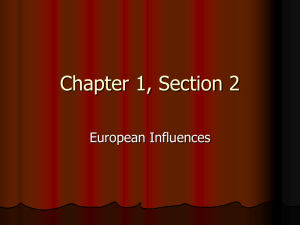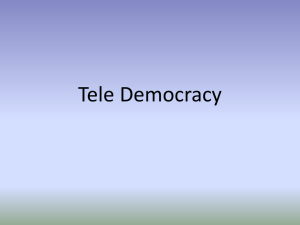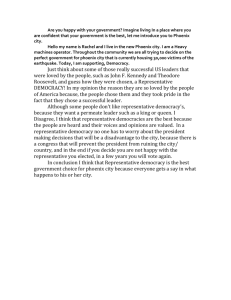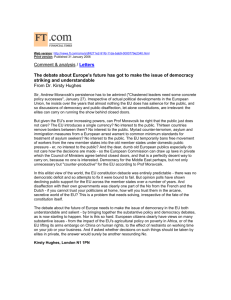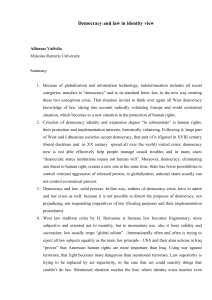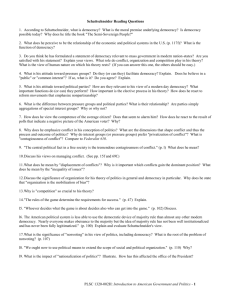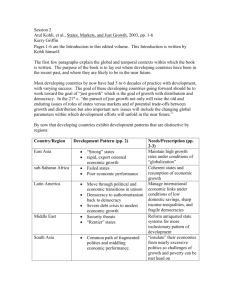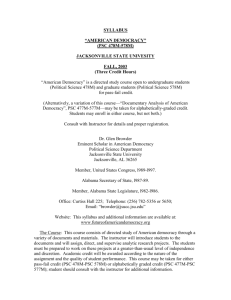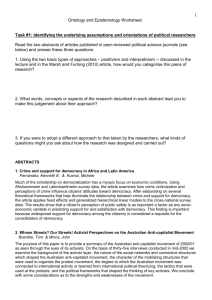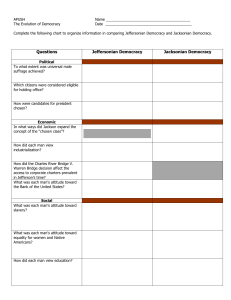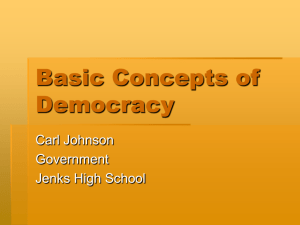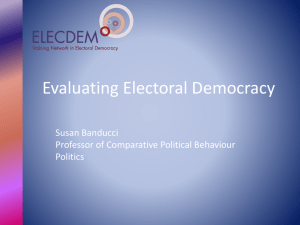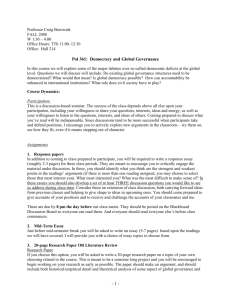Measuring Process and Impacts: A Personal Perspective on
advertisement
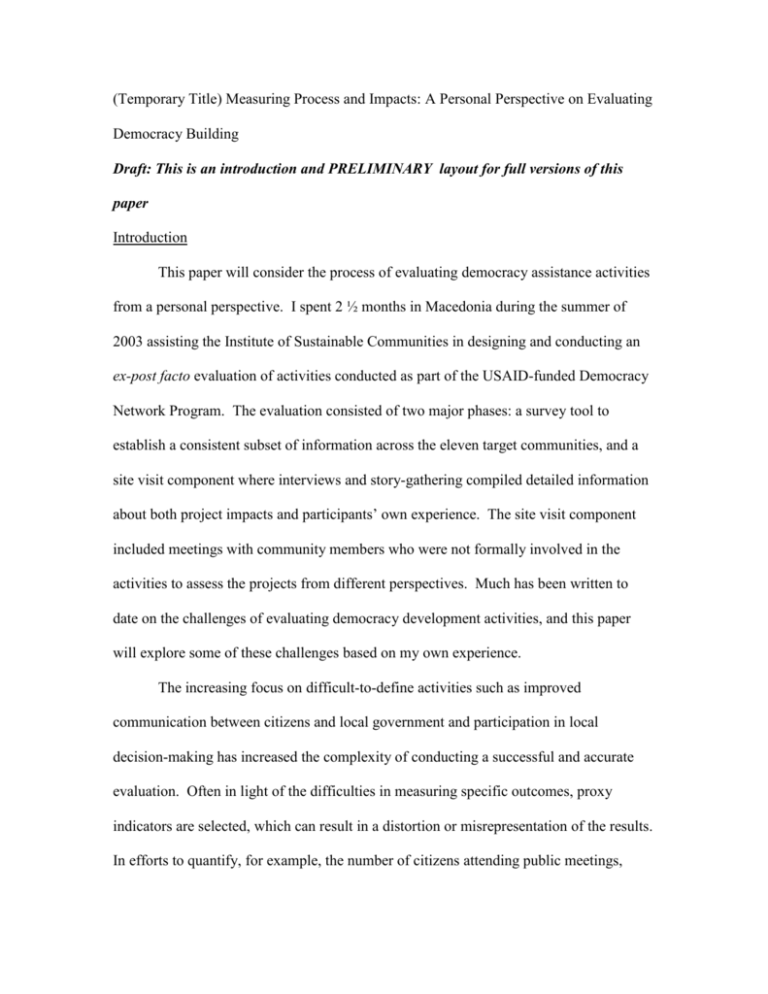
(Temporary Title) Measuring Process and Impacts: A Personal Perspective on Evaluating Democracy Building Draft: This is an introduction and PRELIMINARY layout for full versions of this paper Introduction This paper will consider the process of evaluating democracy assistance activities from a personal perspective. I spent 2 ½ months in Macedonia during the summer of 2003 assisting the Institute of Sustainable Communities in designing and conducting an ex-post facto evaluation of activities conducted as part of the USAID-funded Democracy Network Program. The evaluation consisted of two major phases: a survey tool to establish a consistent subset of information across the eleven target communities, and a site visit component where interviews and story-gathering compiled detailed information about both project impacts and participants’ own experience. The site visit component included meetings with community members who were not formally involved in the activities to assess the projects from different perspectives. Much has been written to date on the challenges of evaluating democracy development activities, and this paper will explore some of these challenges based on my own experience. The increasing focus on difficult-to-define activities such as improved communication between citizens and local government and participation in local decision-making has increased the complexity of conducting a successful and accurate evaluation. Often in light of the difficulties in measuring specific outcomes, proxy indicators are selected, which can result in a distortion or misrepresentation of the results. In efforts to quantify, for example, the number of citizens attending public meetings, attention is shifted from which citizens are attending these meetings or what impact their attendance has had. Are these new “mechanisms for public participation” truly examples of a wide variety of stakeholders coming together to participate in decision-making, bringing democracy to the micro-level, or is this is a small, elite section of the community. Are marginalized groups or sectors represented in these “achievements.” One-dimensional numbers are ill-suited towards measuring this type of critical information, which reinforces the necessity of a more nuanced and personalized approach to evaluations. This example also helps to explain the distinction between evaluation of the process and assessment of the effects. This was one of the most important concepts to shape our evaluation activities in Macedonia. My efforts were fairly equally divided to consider both aspects, if not leaning more heavily towards process questions. An evaluation that doesn’t consider aspects of the project’s process can’t place the measured effects in proper context. By process, I refer to aspects of these projects including how well the project: Included marginalized groups or sectors, the non-elite, and citizens of varying educational levels; Developed local project ownership; Built-in mechanisms for sustainability of positive impacts. These questions involve some guesswork, to be sure, but an interview-based approach was useful for gathering participant perspective on some of these issues. My experience was that projects could appear to have multiple positive impacts and strong indicators, while performing with more mixed results on these process questions. To me, this points to the benefit of an honest, internal evaluation, outside of attempts to meet USAID or other donor reporting requirements which focus more on these quantifiable, but possibly misleading results. Moving beyond an indicator-based approach by meeting with participants and non-participants and exploring their opinions, criticisms, and suggestions will be the most useful tool in strengthening the approaches employed by democratization projects. Outline for Remainder of Paper Draft List of Major Topics to be Discussed: A. Development of survey tool and site visit, how well the tools developed actually worked, and what changes I would make in retrospect (evaluating the evaluator.) B. Discussion of balancing a necessary amount of quantitative information with the qualitative portion. C. The inclusion of non-participating citizens in the evaluation, how it was organized and advantages/disadvantages of this approach. D. Cross-cultural issues, i.e. translating concepts into a local context. For example, the idea of asking “How did your participation affect you as an individual?” is an Americanized concept that seems more suited to a talk-show than an evaluation, and it elicits laughter. Reviewing the process of being involved with a participant will provide the same information in a more subtle context. If the evaluations are not being conducted in the local language, having a translator who can both translate and facilitate is instrumental to the success of this approach. E. Formulating the right questions. There is a danger that direct, explicit questions will be answered with the assumed ‘correct response.’ I noticed a difference in the success of the interviews when it was made clear that the evaluation was not of a community’s efforts but placed the emphasis on ISC efforts. There was an improved dialogue when the evaluation was disassociated from future funding opportunities. F. Challenges in information gathering (staff turnover, documentation needs, making appropriate contacts, etc.). G. Thoughts on the use of the story-telling approach. H. Conclusion Final reflections, how my perspective changed, expectations versus realities, and how my biases may have impacted my abilities as an evaluator.
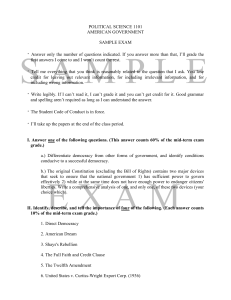
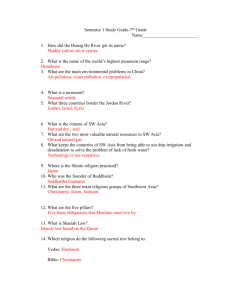


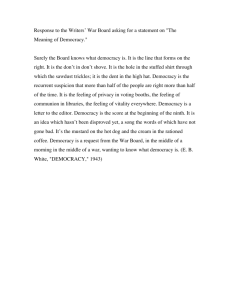
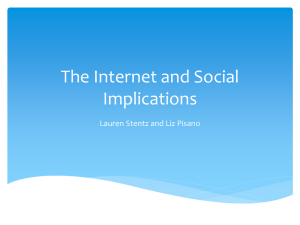
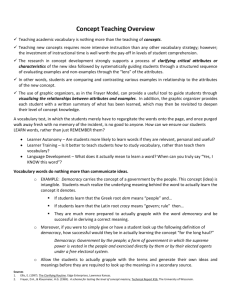
![“The Progress of invention is really a threat [to monarchy]. Whenever](http://s2.studylib.net/store/data/005328855_1-dcf2226918c1b7efad661cb19485529d-300x300.png)

